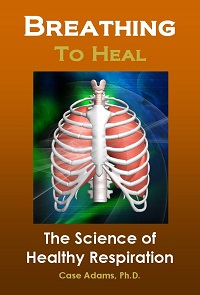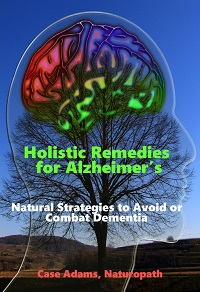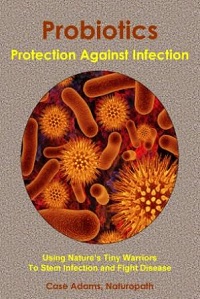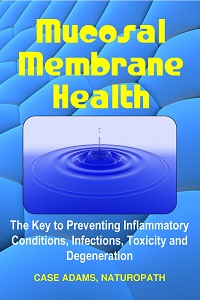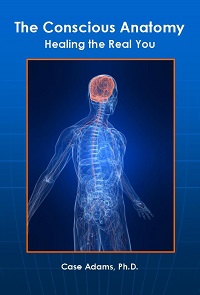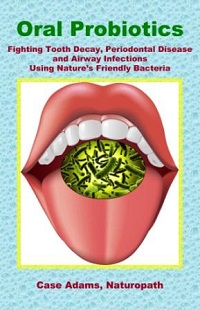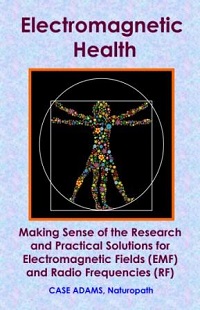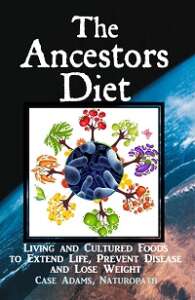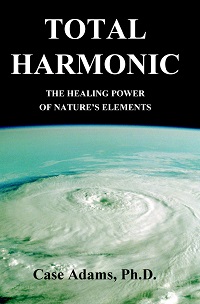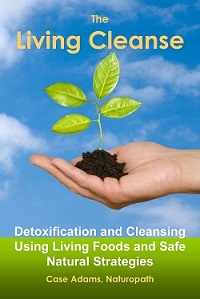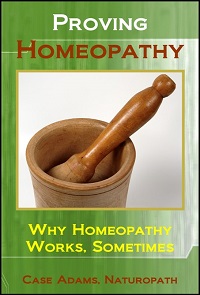Periodic Fasting Boosts Our Stem Cells and Immunity

Hippocrates suggested periodic fasting
Research is illustrating that periodica fasting is good for us in many ways.
Some health advocates propose we need to eat at least three meals a day: Every day. Some weight loss proponents cohort eating throughout the day is best.
But did our ancestors always have the good luck to be able to gorge on three meals – or even five meals – every day?
More than a decade ago, a study came out that showed that mice that ate less tended to live longer. It wasn’t just a fluke – at least among mice. Studies that followed tested other critters and found similar results: When they ate less, they tended to live longer. Significantly longer: We’re talking about 25 to 30 percent and longer.
But just as in many studies on animals, these results didn’t easily translate to primates or people. Furthermore, cutting down on nutrition can create nutrient deficiencies.
While it seems there are as many weight loss diets as people who need it, this is beside the point. We are talking about periodic fasting here. Taking a day or two off – or part of a day off – from eating.
The reality is that periodic fasting – also called intermittent fasting – may indeed have a surprising effect – one not found with simply reducing all eating: It may increase our body’s production of stem cells. And herein periodic fasting may not only increase longevity: It could also increase immunity, speed up healing and promote tissue repair throughout the body.
Too good to be true you say?
In this article
First signs of periodic fasting benefits
Periodic fasting has been promoted by ancient healers for thousands of years. Many ancient traditions around the world have promoted a day’s fast on every spiritual holiday. This promoted devotion, yes. But it also was found to have a healthy side-effect: It tended to help the healing process. For this reason, the ancients understood that devotional fasting also helped purify the body.
This periodic fasting tradition endured through the centuries and was promoted by early naturalists and country doctors, including the famed Dr.s Jethro Kloss and John Harvey Kellogg.
Then in 1956, a Spanish study tested periodic fasting among 120 people over the age of 65 who lived in a retirement home. Half of the people fasted for part of every other day, and the other half consistently every day.
Those 60 adults who fasted part of every other day ate 900 calories one day and then 2300 calories the next, to arrive at an average of 1600. This average was also near levels of those in the control group.
Over the three-year period of the study, there were six deaths among the periodic-fasting group. There was more than twice the number of deaths – thirteen – among the 60 people in the control group.
Another difference was in their hospitalization during the three years. The periodic-fasting group members were in the hospital a total of 123 days, while the control group was in the hospital a total of 219 days.
These two statistics point to similar results: Less than half the number of deaths and nearly half the number of hospitalizations. With only one major difference between them: Periodically fasting.
Fast forward to the 2000s
Between 2003 and 2006, researchers from the Louisiana State University Medical Center tested this model on a case-study basis, using various types of controls. They called this “alternate day calorie restriction.” One day consisted of 20 to 50 percent less calories compared to the next day.
The researchers found results quickly – sometimes as short as two weeks. They found reductions in insulin resistance, allergies, asthma, and the reduction of viral and bacterial infections. These included colds, flu, sinusitis, periodontal disease, tonsillitis and others.
A more recent study from the school of medicine at Malaysia’s University of Kebangsaan also found similar benefits. This study followed 24 healthy Malaysian men for three months. During the study period, the subjects reduced their calories by 300 to 500 calories per day. They also partially fasted for two days per week according to their religious tradition.
After the three months, the subjects had increased energy, better moods and better sleep quality. A follow-up study from the same research team found the men had improved DNA quality. They had improved DNA repair and a reduction of DNA breakage. This relationship between periodic fasting and increased DNA repair has also been found among mice studies.
Stem cells and periodic fasting
With this background, we can now add recent research that began testing yeast, then mice and then people in a phase one clinical study. This research arrived at the reality that periodic fasting does a heck of a lot more than just reduce disease: It stimulates the body’s production of stem cells.
Human stem cells are ultimately produced in the bone marrow. Stem cells produced in the bone marrow are often called “adult stem cells” even though everyone, even children, produce these stem cells throughout our lifetimes. But as we age, we tend to produce fewer and fewer stem cells.
These progenitor cells are a boon because they are super-cells: They can replace just about every type of cell in the body during a healing event. This means that in order to heal tissue damage, the body equips stem cells with the programming to become earnest replacements to those damaged cells.
Over the past decade or two, researchers have found that healthier people tend to produce more stem cells than unhealthy people.
Researchers find fasting boosts stem cells
The USC Longevity Institute at the University of Southern California at Davis began looking at periodic or intermittent fasting with clinical ardor.
Fasting altogether is difficult for most any critter or person. So the researchers developed a low-calorie diet regimen that duplicates the effects of fasting. The regimen is called a fasting mimicking diet or FMD.
For the fasting days, the FMD reduced the calorie intake by between 34 to 54 percent of their normal diet. The regimen maintained a good supply of nutrients, protein and other required elements – but with the reduction in calories.
“Strict fasting is hard for people to stick to, and it can also be dangerous, so we developed a complex diet that triggers the same effects in the body,” said Valter Longo, USC Davis professor of biogerontology. Dr. Longo is also the director of the USC Longevity Institute.
The researchers started with yeast. Then they moved to mice. They tested different fasting periods – from two to four days – and applied the testing over six-month periods. For each of the fasting periods, they gave the critters the FMD. They resumed their normal diets after the fasting period.
Then they tested 19 adults who each ate the low-calorie fasting mimicking diet once a month for five days.
In all the trials, they found that the periodic fasting diet resulted in increases in healthy markers. In the human trial, reduction in risk factors for heart disease, diabetes, cancer and aging were found.
But they also found that the periodic or intermittent fasting produced a greater number of stem cells.
“We could not predict that prolonged fasting would have such a remarkable effect in promoting stem cell-based regeneration of the hematopoietic system,” said Dr. Longo.
Periodic fasting triggers immunity reset
The research established that with each fasting cycle, the body will break down a good portion of its white blood cells. It also uses up available glucose, fat and ketones.
But the reduced white blood cell count triggers a boost in stem cell regeneration. This is coupled with a boost in the PKA enzyme. This has been found in previous research to regulate and boost stem cell renewal.
This regeneration of the immune system allows for a type of reboot of the immune system according to Dr. Longo:
“And the good news is that the body got rid of the parts of the system that might be damaged or old, the inefficient parts, during the fasting. Now, if you start with a system heavily damaged by chemotherapy or aging, fasting cycles can generate, literally, a new immune system.”
Other ways to boost adult stem cells?
Can we stimulate the production of stem cells with nutrition? Research from a decade ago found that certain foods/nutrients appear to have the effect of boosting the bone’s production of stem cells. However, it should be noted that this research does not come from studying the whole person – even the whole body of a mouse.
With this in mind, in 2006, researchers from the University of South Florida studied cell cultures in a laboratory. The cultured plates included human bone marrow cells, human CD34+ cells, and CD133 cells. The cells were put into fetal calf serum – blood from a calf fetus.
The researchers proceeded to add nutrients directly to these cells. To the bone marrow cell cultures, they added a number of herbs and compounds: This included spirulina, spinach, epicatechin, withania, sonifera, cacao, rehmania and astragulus. They also added freeze-dried blueberry, green tea extract, catechin, vitamin D3 and carnosine to the cell cultures.
Why were these foods, herbs and compounds tested and not others? Because these had been shown in one form or another to be antioxidant or otherwise promoting health and possibly longevity.
The first batch of nutrients above did not seem to produce the effect of increasing proliferation (division) of the bone marrow cells. But the last group did – the freeze-dried blueberry, green tea extract, catechin, vitamin D3 and carnosine.
They also tested hGM-CSF, which is a synthetic recombant of what the body produces to help stimulate stem cells.
The largest proliferation was produced by the hGM-CSF, which increased proliferation by 44 percent.
This was followed by the catechin extract (a compound in many herbs), which produced 34.8 percent proliferation. This was followed by the green tea extract, which produced 34.6 percent proliferation. Then the blueberry powder – which produced 34.5 percent proliferation. The carnosine produced 26.6 percent and the vitamin D3 produced a 14.8 percent proliferation.
Let’s review:
• catechin extract – 34.8% proliferation
• green tea extract – 34.6%
• blueberry powder – 34.5%
• carnosine – 26.6%
• vitamin D3 – 14.8%
The researchers then started combining the compounds and found that blueberry powder with carnosine produced the highest proliferation, at 83 percent. Blueberry and catechin produced a 70 percent increase. In most of the combination cases, anything put in with the blueberry achieved the highest levels of proliferation.
But oddly, these compounds did not stimulate the proliferation of the immune cells. The hGM-CSF increased the immune cells by 48 percent as expected. But the nutrient compounds produced proliferation in the five to twenty percent region.
It might be easy to assume that eating these compounds should also have the effect of stimulating proliferation of bone marrow cells – stem cells. But this type of in vitro study has a glaring short-coming:
Many of these nutrients are broken down by the digestive tract and not absorbed in whole form into the body. Some are further broken down by the liver and bloodstream. Furthermore, their ability to be absorbed into the bones and initiate proliferation among bone marrow cells provides a further barrier. The researchers pointed out this problem in their study as they covered the limitations to this study:
“For example, our studies were conducted in vitro and therefore do not have the added complexities associated with the pharmacokinetics of these various compounds when administered orally.”
The perfect example again is freeze-dried blueberry powder. How possible is it that our digestive tract, intestinal walls, liver, blood and bones will allow freeze-dried blueberry powder to gain entry in its whole form? Surely it – and the green-tea and even the carnosine – will be broken down within the body before reaching the bone marrow.
Carnosine, for example, is a combination of two amino acids – beta-alanine and L-histidine. Carnosine is produced in the brain and muscle tissues, where it is used as an antioxidant to help repair cells. However, when carnosine enters the bloodstream, it is broken down almost immediately by an enzyme called carnosinase.
Illustrating this, one study measured men’s blood carnosine levels after eating a 7.5 oz steak. Their carnosine levels went to 448 right after eating the steak, but went to zero within a few hours. Other research on animals has shown that carnosine can reside in the cells, but not in the bloodstream.
And since nutrients delivered to cells must pass through the bloodstream, the likelihood of uncleaved carnosine reaching the bone marrow appears remote.
Carnosinase is produced by the brain and liver. From these locations, carnosinase is secreted into the bloodstream, where it breaks down carnosine. Why? Because the body is naturally preventing carnosine from being in the bloodstream – for some reason.
Carnosine is produced within our cells. It is catalyzed by carnosine synthase. Here it is coupled to the hydrolysis step of the adenosine triphosphate (ATP) cycle.
Therefore, the ingredients to a healthy production of carnosine within the cells would be eating a healthy diet composed of good quality amino acids, combined with exercise. And surely, if the bones are active, there should be a good supply of carnosine within active bone cells.
As for the availability of beta-alanine, alanine is not an essential amino acid because the body – and the body’s microorganisms – produce this nutrient. It is produced as part of the body’s pyrimidine processing. This processing takes place in the liver and among our gut microbes through a step that includes L-aspartate biosynthesis.
For these reasons, supplementation of beta-alanine or carnosine have had conflicting and even disappointing results in many studies. And there have been some side effects noted in some of these.
This is not to say that supplemented levels of each of these compounds – blueberry, green tea extract, catechin (a compound found in many herbs), even carnosine (or beta-alanine) and vitamin D3 don’t provide health benefits. And a multivitamin might be a good idea for anyone who feels their diet is lacking some nutrients.
Vitamin D3 is by far the most likely to be absorbed into the bones and useful for the proliferation of bone marrow stem cells. But as we have discussed with the research, the liver produces the body’s most efficacious form of vitamin D from compounds produced in the skin after exposure to the sun.
It would be great to find some magic potent that provide the miracle of longevity. But our best resource will always be Nature – with which our body is synchronized. Surely we can live naturally and at peace with our environment.

Learn the benefits of the sun and how to help prevent skin cancer while supporting this ad-free website.
REFERENCES:
Teng NI, Shahar S, Rajab NF, Manaf ZA, Johari MH, Ngah WZ. Improvement of metabolic parameters in healthy older adult men following a fasting calorie restriction intervention. Aging Male. 2013 Dec;16(4):177-83. doi: 10.3109/13685538.2013.832191.
Teng NI, Shahar S, Manaf ZA, Das SK, Taha CS, Ngah WZ. Efficacy of fasting calorie restriction on quality of life among aging men. Physiol Behav. 2011 Oct 24;104(5):1059-64. doi: 10.1016/j.physbeh.2011.07.007.
Tinkum KL, Stemler KM, White LS, Loza AJ, Jeter-Jones S, Michalski BM, Kuzmicki C, Pless R, Stappenbeck TS, Piwnica-Worms D, Piwnica-Worms H. Fasting protects mice from lethal DNA damage by promoting small intestinal epithelial stem cell survival. Proc Natl Acad Sci U S A. 2015 Dec 22;112(51):E7148-54. doi: 10.1073/pnas.1509249112.
Brandhorst S, Choi IY, Wei M, Cheng CW, Sedrakyan S, Navarrete G, Dubeau L, Yap LP, Park R, Vinciguerra M, Di Biase S, Mirzaei H, Mirisola MG, Childress P, Ji L, Groshen S, Penna F, Odetti P, Perin L, Conti PS, Ikeno Y, Kennedy BK, Cohen P, Morgan TE, Dorff TB, Longo VD. A Periodic Diet that Mimics Fasting Promotes Multi-System Regeneration, Enhanced Cognitive Performance, and Healthspan. Cell Metab. 2015 Jul 7;22(1):86-99. doi: 10.1016/j.cmet.2015.05.012.
Sailaja BS, He XC, Li L. Stem Cells Matter in Response to Fasting. Cell Rep. 2015 Dec 22;13(11):2325-6. doi: 10.1016/j.celrep.2015.12.008.
Wu S. Fasting triggers stem cell regeneration of damaged, old immune system. USC News. June 5, 2014.
Johnson JB, Laub DR, John S. The effect on health of alternate day calorie restriction: eating less and more than needed on alternate days prolongs life. Med Hypotheses. 2006;67(2):209-11.
Bickford PC, Tan J, Shytle RD, Sanberg CD, El-Badri N, Sanberg PR. Nutraceuticals synergistically promote proliferation of human stem cells. Stem Cells Dev. 2006 Feb;15(1):118-23.
Cararo JH, Streck EL, Schuck PF, Ferreira Gda C. Carnosine and Related Peptides: Therapeutic Potential in Age-Related Disorders. Aging Dis. 2015 Oct 1;6(5):369-79. doi: 10.14336/AD.2015.0616. eCollection 2015 Sep.


